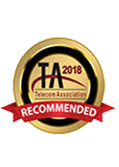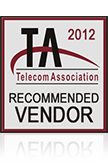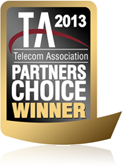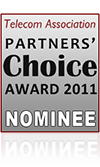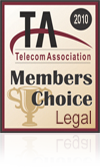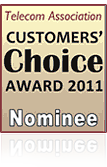Federal VoIP Requirements
Providers of VoIP services are required to: register with the FCC; contribute to the FCC’s Universal Service Fund (USF), as well as FCC programs covering TRS, NANPA, LNP and Regulatory Fees; comply with E911 and Communications Assistance for Law Enforcement Act (CALEA) obligations; comply with the FCC’s Customer Proprietary Network Information (CPNI) obligations; and comply with a diverse array of state tax and assessment obligations.
In short, offering a VoIP service is no longer an unregulated undertaking. It is a complicated matter, with many legal hoops to jump through.
VoIP Provider Lawyer
Ben Bronston is a skilled telecom lawyer who represents VoIP providers seeking help in dealing with the significant red tape that they face. Ben Bronston is a nationally recognized expert with more than 20 years of experience practicing in telecom. He can put that experience to work for your VoIP company. Call Ben Bronston – Telecom/IT Lawyer today at 888.469.0579 for a consultation.
Federal VoIP Requirement Info
- VoIP Service
- FCC Registration (Form 499-A)
- USF Contributions
- Other Federal Assessments
- VoIP E911
- Law Enforcement/CALEA
- CPNI
- Disability Access and TRS
- E-Rate Funding
FCC Registration (Form 499-A)
VoIP providers must file an FCC Form 499-A registration with the Universal Service Administrative Company (USAC). The FCC Form 499-A serves to register the company with the FCC and USAC as a provider of U.S. domestic, interstate services.
This registration also automatically ties the company into the FCC’s USF contribution system, identifying the company as a potential contributor under the program. Among other things, the form requires the company to list an agent for service of process in the District of Columbia and identify the states in which the company is likely to provide service.
USF Contributions
Without determining whether VoIP services are “telecommunications services” or “information services,” the FCC has concluded that VoIP providers are “providers of interstate telecommunications” for purposes of USF, and thus must contribute to USF. USF fees subsidize or underwrite telecommunications services for a number of different groups including residents of rural areas, low-income consumers, rural health care providers, schools and libraries.
USF contributions are calculated based on quarterly submissions of FCC Form 499-Q and annual submissions of FCC Form 499-A (due each April 1st). Providers are then billed monthly and payment is required on a monthly basis. The contribution rate, which changes quarterly, has in recent years run at approximately 12-15 percent of combined interstate/international revenues, and presently stands at 15.6%.
VoIP providers must file an annual FCC Form 499-A (due on April 1st), and may be required to file quarterly FCC Forms 499-Q (due on February 1st, May 1st, August 1st, and November 1st of each year).
Like wireless providers, VoIP providers can report revenues by using 1) a “safe harbor” (set at 64.9%); 2) actual revenues; or 3) a traffic study to estimate interstate revenues. The FCC set the VoIP “safe harbor” at 64.9% because it determined that VoIP service is predominantly used for interstate and international service, like wireline toll service. The percentage of interstate revenues reported to the FCC by wireline toll providers is 64.9%, so the FCC established the same percentage as a “safe harbor” for VoIP providers.
Other Federal Assessments
In addition to the payment of USF contributions, VoIP providers are also subject to other federal regulatory assessments. Specifically, such providers are required to contribute to the following programs: TRS, NANPA, and LNP.
These factors all vary annually, and LNP additionally varies by region. They were most recently assessed as follows: TRS at 1.137%, NANPA at .00107%, and LNP at up to .0036% of intrastate (LNP and NANPA only), interstate, and international end-user revenues. In addition, VoIP providers are required to pay FCC Regulatory Fee assessments which are assessed annually, usually in September. They were last assessed at .342% of interstate and international end-user revenues in September 2009.
VoIP E911
As a result of FCC regulations as well as the New and Emerging Technologies 911 Improvement Act of 2008 (NET 911 Act), VoIP providers are required to provide 911 and E911 service. To facilitate a VoIP provider’s provision of 911 and E911 service, the NET 911 Act requires the owner or controller of a capability that can be used for 911 or E911 service to make that capability available to a requesting VoIP provider.
Typically, owners or controllers of such capabilities include incumbent local exchange carriers, wireless service providers, states, localities, and Public Safety Answering Points (PSAPs), and third party commercial providers which route E911 calls to the appropriate PSAP.
Pursuant to FCC rules, VoIP providers must 1) transmit all 911 calls to the appropriate PSAP, designated statewide default answering point, or appropriate local emergency authority; 2) transmit a callback number (automatic numbering information or ANI) for each 911 caller to the PSAP; and 3) transmit the caller’s “Registered Location” to the PSAP.
A VoIP provider must also advise all subscribers to its service (existing and new) of the circumstances under which E911 service may not be available or may be limited in comparison to traditional E911 service (i.e., power outages, Internet connection failure and network congestion). These notifications must be prominent and in plain language. Such providers must obtain, and maintain a record of, an affirmative acknowledgement from all subscribers that they received this advisory and understood it. Customers must also be notified as to E911 limitations via warning stickers that the customer is instructed to place on or near VoIP handsets.
Law Enforcement/CALEA
VoIP providers must comply with CALEA obligations. CALEA is intended to preserve the ability of law enforcement agencies to conduct electronic surveillance by imposing specific obligations on “telecommunications carriers” for assisting law enforcement, including delivering call interception and call identification functionality to the government with a minimum of interference to customer service and privacy.
Specifically, CALEA imposes obligations on VoIP providers to assist law enforcement, including with respect to 1) call intercepts; 2) accessing call identifying information; 3) delivering intercepted communications and call identifying information to the government; and 4) doing so with a minimum of interference to subscriber service and privacy. VoIP providers must also be able to provide law enforcement with specific types of call information, referred to as “punch list” capabilities, which include 1) content of subject-initiated conference calls; 2) party hold, join, drop on conference calls; 3) subject-initiated dialing and signaling information; 4) in-band and out-of-band signaling; 5) timing information; and 6) dialed digit extraction. In short, this means that VoIP providers are required to, upon receipt of a court order or lawful request, make this specific information available to law enforcement in an acceptable format.
VoIP providers are also required to file with the FCC a CALEA System Security and Integrity (SSI) Plan, which outlines the policies and procedures each provider has implemented to ensure compliance with CALEA’s various recordkeeping and procedural requirements. The SSI Plan must also provide the FCC with contact information for a senior officer or employee designated to oversee a provider’s compliance with CALEA. SSI Plans must be filed with the FCC before a provider begins providing services to customers.
CPNI
VoIP providers are required to comply with the FCC’s heavily-enforced regulations governing CPNI. CPNI is the individually identifiable information that is created by a customer’s relationship with a provider, such as data about the frequency, duration, and timing of calls, the information on a customer’s bill, and call identifying information.
While the rules in this area are complex, they can be broken down into the following categories: a) authorization procedures, b) marketing restrictions, c) procedures for responding to CPNI security breaches, and d) the obligation to file an annual CPNI Certification.
Since the release of call detail information over the telephone presents immediate risk to privacy, VoIP providers are prohibited from releasing call detail information based on customer initiated telephone contact except under three circumstances. These are 1) when the customer provides a pre-established password; 2) when a customer requests that the information be sent to the customer’s address of record; or 3) when a provider calls the telephone number of record and discloses the information. In addition, providers must provide mandatory password protection for online account access.
VoIP providers must obtain opt-in consent from a customer before disclosing a customer’s CPNI to a joint venture partner or an independent contractor for the marketing of communications-related services to the customer. Such affirmative consent may be in oral, electronic or written form after providing appropriate notice.
If there has been a breach of CPNI, providers must provide electronic notification of the breach within seven business days to the United States Secret Service (USSS) and the Federal Bureau of Investigation (FBI). In order to allow law enforcement time to conduct an investigation, carriers must wait another seven business days before notifying the affected customers of the breach (unless the USSS and FBI request that the carrier continue to postpone disclosure).
Finally, VoIP providers must file an annual certification with the FCC due by March 1st, explaining any actions that they have taken against data brokers and summarizing all consumer complaints that they have received during the year relating to the unauthorized release of CPNI. Significantly, the certification must also be accompanied by a summary of the provider’s CPNI policies.
In recent years, the FCC’s Enforcement Bureau has aggressively levied penalties against large numbers of providers which fail to make the annual March 1st CPNI Certification filing or otherwise comply with the FCC’s substantive CPNI requirements. Having a knowledgeable telecom lawyer help you prepare and review your filings could mean avoiding significant fines.
Disability Access and TRS
In another recent order, adopted May 31, 2007, the FCC extended disability access requirements to VoIP providers and equipment manufacturers (for the benefit of individuals with hearing or speech disabilities). Specifically, this requires VoIP providers and manufacturers to evaluate the accessibility of their equipment and services, design or develop accessible equipment and services, and provide accessibility information with respect to their equipment and services.
E-Rate Funding
In a recently-released ruling, the FCC extended E-Rate funding eligibility to certain VoIP providers. Since its implementation in 1998, the FCC’s E-Rate program has provided discounts on eligible telecommunications and information services to schools and libraries under the Schools and Libraries Universal Service Support Mechanism. USAC reimburses service providers on discounts that are passed on to participating schools and libraries. As a result of the ruling, VoIP services are now eligible for funding under the E-Rate program.

